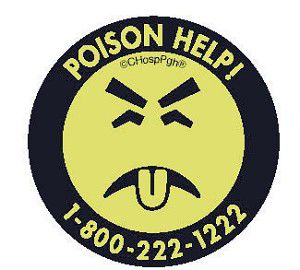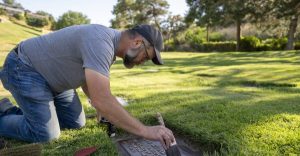Health & Home: When in doubt, call the Poison Center
Published 2:03 pm Sunday, December 9, 2007

- Health & Home: When in doubt, call the Poison Center
Well, it finally happened: We had to call the Poison Center.
One hectic morning last week I was getting our son dressed and my husband went in search of our 22-month-old daughter. He found her in the bathroom with an open jar of Noxzema. She wasn’t using it as a facial cleaner, however. It was more of an after-breakfast snack.
Trending
After I determined she had swallowed a tablespoon at the very most, my husband checked out the ingredients. As soon as he saw “propylene glycol,” which he recognized as a type of antifreeze, he called the Poison Center. He told them what had happened and they advised him to give her plenty of water and expect some diarrhea.
It turns out propylene glycol is the least-toxic type of antifreeze and it’s an ingredient in lots of cosmetics, toothpaste, lotions, shampoos and medications.
They were sure right about the diarrhea. Fortunately, she survived her Noxzema experience without any other ill effects and without a visit to the emergency room.
So, after screwing the lid on tight and putting the Noxzema out of reach, we breathed a sigh of relief. Then I got to looking around and realized our house is really a minefield of poisonous substances. There are cleaning supplies and medicines – which obviously are a potential danger and thus kept out of reach. Then there are all those less-obvious hazards, things such as hand sanitizer, dish soap, vitamins and fluoride mouthwash that seem harmless enough until you imagine a child drinking them.
This time of year, other hazards show up in and around homes: de-icers used to clear sidewalks, fake snow on Christmas trees, mistletoe and holly.
A decade ago, while I was getting my master’s degree in nursing at Oregon Health & Science University, I worked in the evenings as a telephone advice nurse answering after-hours calls for pediatricians all over Oregon. The Oregon Poison Center was located right next door so I got to know some of the nurses who worked there and heard their stories.
Trending
Around the December holidays, the Poison Center got quite an amazing variety of calls about children who drank pretty bottles full of cologne or perfume, ate tinsel from the tree, nibbled on poinsettia leaves or consumed alcoholic eggnog left over from a party.
Then there were the calls about pets – the dog that ate glass ornaments off the Christmas tree and the cat that also ate the poinsettia.
I remember being dismayed by the number of calls from parents whose children had consumed alcoholic beverages – how could they let that happen? Now that I’m a parent, I know the more adults there are around the more children can get away with. It would be pretty easy for a child to drink wine, beer or liquor left in a glass at a crowded party and not have an adult notice until it was too late.
The Poison Center also gets plenty of calls about children who have swallowed objects such as coins, marbles and buttons. Most of these will pass harmlessly through the gastrointestinal system within a day or two. Pennies are more dangerous than other coins because they are made of zinc, which corrodes when it mixes with stomach acid. If a penny becomes lodged in the stomach instead of passing through the intestines, it can eat away at the lining of the stomach and cause an ulcer. Batteries pose a similar
hazard.
The moral of this column is this: Keep hazardous substances out of children’s reach, remember children can and will put just about anything in their mouths and having the number for the Poison Center memorized is a great idea.
The Poison Center’s number is (800) 222-1222; they are available 24 hours a day, every day of the year.
—–
Kathryn B. Brown worked as a registered nurse and a family nurse practitioner before coming to work for the East Oregonian. Her column appears here every other week. She can be reached at kbbrown@eastoregonian.com.









